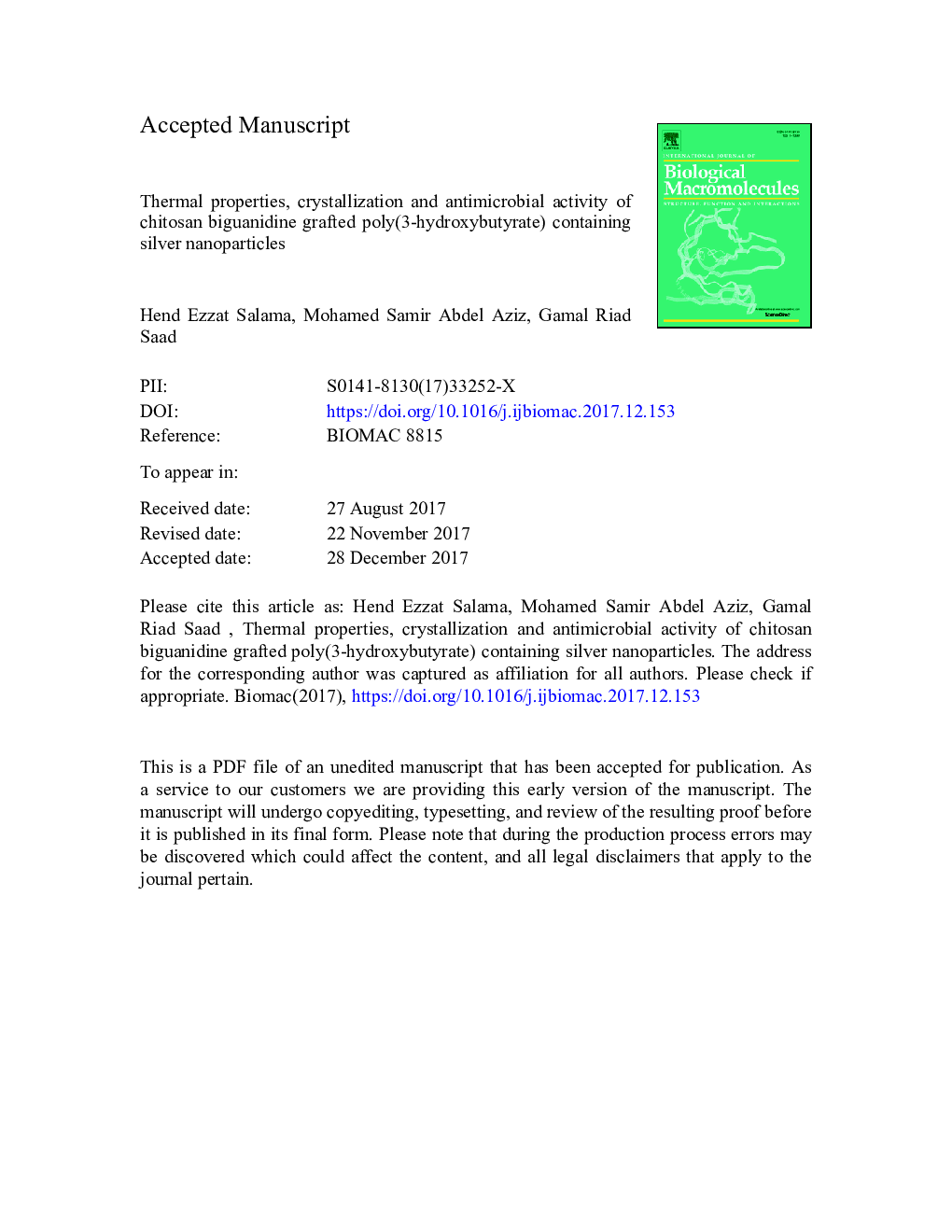| Article ID | Journal | Published Year | Pages | File Type |
|---|---|---|---|---|
| 8327703 | International Journal of Biological Macromolecules | 2018 | 35 Pages |
Abstract
Green synthesis of novel nanocomposites series based on chitosan biguanidine grafted poly(3-hydroxybutyrate) copolymer (ChG-g-PHB) and silver nanoparticles (AgNPs) was successfully done via in situ reduction of AgNO3 in the copolymer matrix. Transmission electron microscopy verified the homogeneous dispersion of spherical shape of the AgNPs with an average particle size 12.3 to 19.2 nm. X-ray diffraction pattern revealed face centered cubic structure of AgNPs. The thermal stability was improved upon increasing the AgNPs content up to 2.0%, then declined upon loading with 3.0%. Coats-Redfern model showed that the sample with 2.0% AgNPs has the highest activation energy of the thermal degradation with values of 264 and 270 kJ molâ 1 for the 1st and 2nd degradation steps, respectively. Differential scanning calorimetry indicated that AgNPs acts as a nucleating agent for the nonisothermal melt crystallization of PHB component. Avrami equation described well the crystallization of PHB segments, with average Avrami exponent of 3.10 and 3.36 for ChG-g-PHB and its 2.0% nanocomposite, respectively. Regardless of the content of AgNPs, the antimicrobial activity of the nanocomposites is better than the neat copolymer. The sample loaded with 3.0% AgNPs showed the best antimicrobial activity with MIC value range of 0.98-1.95 μg mLâ 1.
Related Topics
Life Sciences
Biochemistry, Genetics and Molecular Biology
Biochemistry
Authors
Hend Ezzat Salama, Mohamed Samir Abdel Aziz, Gamal Riad Saad,
